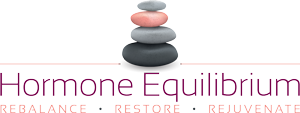Body identical hormone therapy can help to improve and balance mood swings, low libido, anxiety, poor memory or “brain fog” as well as have a positive impact on sleep quality, bone strength, energy levels and skin ageing. I specialize in the prescription of Body identical hormones to manage symptoms and restore optimal health. Since every woman is unique, I want to give women a choice of treatment options.
What are body identical hormones ?
Body identical hormones have the identical chemical structure as the hormone molecules produced by our own body. Some of the conventional HRT that is commonly prescribed is extracted from the urine of pregnant mares (e.g. Premarin). These equine hormones, though produced “naturally” are not identical to those that occur and are made by our own body. Equine hormones as well as other synthetic conjugated hormones mimic hormonal activity but are essentially foreign to our bodies and can cause side effects along the way. The effect Body identical hormones are more consistent with our physiological biochemistry and therefore if balanced correctly side effects should be minimal or non-existent.
Our body makes three different forms of Estrogen: Estrone (E1), Estradiol (E2) and Estriol (E3). Estradiol (E2) is the most potent Estrogen and even though it only makes up 10% of the total Estrogen in a woman’s body, it is the most important Estrogen during the reproductive years and it is made in large quantities during pregnancy. As ovarian function declines in a woman reaching the menopause, Estrogen levels fall dramatically and this can be associated with hot flushes, an increased cardiovascular risk and loss of bone density. Studies have shown that Estrogen therapy does have a cardio-protective and bone protective effect, particularly in women younger than 60 years of age.
Progesterone is a hormone that during the reproductive years prepares the lining of the womb for the implantation of a fertilised egg and it also helps maintain the embryo during pregnancy. Low levels of progesterone are associated with amenorrhea, fertility problems, post-natal depression and pre-menstrual syndrome (PMS). Progesterone production slows down earlier than Estrogen production during the peri-menopausal years from about the age of 40. This can result in irregular cycles, heavy periods, headaches and mood swings.
The British Menopause Society states in their Handbook: “Studies have demonstrated that micronised progesterone appears to have a better safety profile when compared with synthetic progestogens and may result in a different safety profile. ” (page 86, 2017 Edition). Studies suggest that with micronised progesterone there is a lower risk of breast cancer, a lower risk of cardiovascular disease and a lower risk for venous thromboembolism (blood clots), compared with synthetic progesterones.
